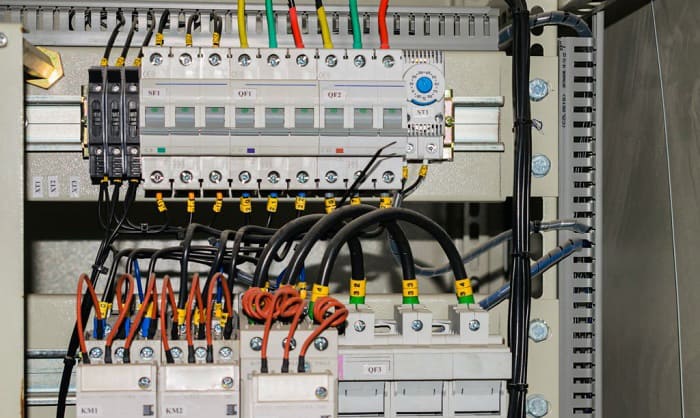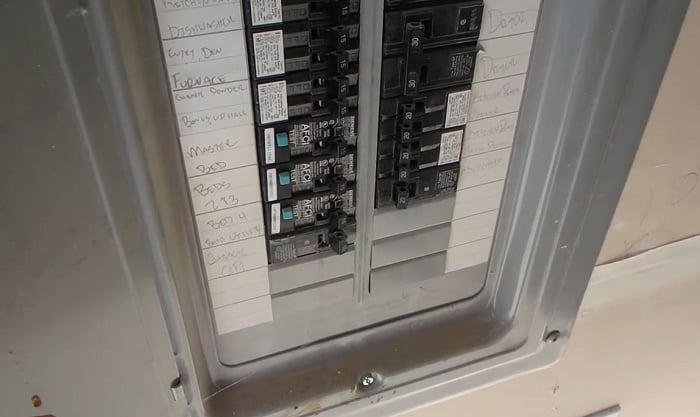Nowadays, we have a large variety of circuit breaker types in the market. Knowing their features allows us to pick the suitable option for our circuit.
For example, the combination AFCI breaker provides more advanced features and protection against arc faults than a regular breaker. To gain more knowledge about what is a combination arc fault breaker, you can read this entire article.
Table of Contents
What Is a Combination Arc Fault Circuit Interrupter?
A combination AFCI breaker is different from a dual function circuit breaker or DFCI breaker. The DFCI breaker is a fusion of AFCI and GFCI breaker types. On the other hand, the combination AFCI breaker has no ground fault protection.
The device is designed to reduce the impact of arcing faults by de-energizing the circuit. This arcing fault refers to unexpected electricity flowing within an unusual path.
Aside from the said function, a combination AFCI breaker has overload and short circuit protection. It also has a trip window indication to tell users if the gadget is in the on or tripped position.
Additionally, it contains a test button to help homeowners verify its function.
Upon expanding the NEC code on AFCI requirements, the combination arc fault circuit breaker is now required in new dwelling units.
Installing a combination type AFCI breaker in your residence will benefit you in several ways. It has the potential to prevent fires and accidents caused by electrical shocks from faulty wiring. Thus, you’ll have peace of mind while living in your home.
There is no difference in installing a typical AFCI circuit breaker and a combination AFCI breaker. This video by Kevin Pon will guide you on the proper setup of a combination AFCI breaker if you don’t know how to complete it yet. I suggest carefully listening to his advice to make the installation process easy and safe.
- Note: Always remember that the compatibility of the combination AFCI breaker and the panel may depend on the brand and classification of the devices themselves.
It may also not be the best option to upgrade the circuit protection to AFCI for some older homes since the neutral wires might not be separated.
Where Are Arc Fault GFCI Breakers Required?
Based on the NEC electrical code article 210.12(A), installing an AFCI breaker is required in all single-phase and 15 to 20 amp circuits with a 120V supply. This rule applies to the area of the kitchen, most rooms of a house, and hallways. AFCI is also necessary in areas where people frequent such as parlors, libraries, and more.
Using AFCI in the said locations will give protection to our properties. Similarly, a dual purpose GFCI/AFCI receptacle should be placed in kitchens and laundry rooms.
Why Are AFCI breakers not required for bathrooms/lavatories?
Bathroom or lavatory outlets can come in contact with water and cause electrocution to the user. In this case, the protection provided by an AFCI is not enough since it only detects an arc fault.
Based on 2020’s NEC 210.8 (A) rule, these rooms are required to have GFCI protection.
GFCI breakers and receptacles are purposely made to detect a ground fault that can cause electrical shocks and fire. Since these potential hazards are more likely to happen in the bathroom, using this kind of protection makes sense.
Also, if a light fixture is at the same level as or lower than a shower, your lighting must have ground fault protection.
Furthermore, aside from the bathroom, it is also required to use ground fault protection in garage areas or any outdoor receptacles.
Installing a GFCI breaker or at least one GFCI outlet for an appliance would be enough.
Conclusion
Knowing what is a combination arc fault breaker will give you knowledge of its purpose and where you can use it. This understanding is crucial, since using the wrong type of circuit breaker might cause an electrical hazard such as fire and electrocution.
Do you think you need a CAFCI in your circuit? Let us know your thoughts by writing them in the comment section below.

I am Andrew Wright. With 8 years of experience designing, installing, and maintaining electrical power systems. I love my job, and I have always wanted to offer others the necessary help so they can take care of their houses.



